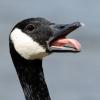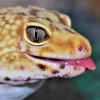Scientific Name: Formica subsericea
Common Name: Field ants
Distribution: North America in the northeast states
Queen size: 10-11 mm
Worker size: 4-6 mm
Natural Habitat: They generally build their nests against trees, under rocks, or in logs.
Circadian Activity: Diurnal
Mating Flight: July - August on warm days
Queen Founding Method: Fully Claustral
Monogyne or polygyne: Monogyne
Average time from egg to worker: Egg to Larvae = 10-15 days; Larvae to pupae = 20-25 days, Pupae to worker = 20-25 days.
Recommended Temperature:
Recommended Humidity: Semi moist
Preferred Foods: They have more of a buffet-style liking. These ants love sugar like aphid honeydew, honey, sugerwater, and ant nectar soft-bodied insects like caterpillars, and seed husks.
Hibernation Details:
Escape Barrier Methods: I use 100-150 gauge metal mesh and Fluon.
Difficulty rating: This is an easy species but can escape easily.
Bite and/or Sting rating: Hardly noticeable
Special Care or Interesting Notes: This species does have formic acid and I would use dirt and pine needles so they can make their own extra ventilation. This species is very sensitive to light and vibrations.
Additional Links: http://www.schoolofa...rg/species/1174
Information submitted by Hunter
Edited by dspdrew, March 5 2022 - 7:13 PM.






















![[CA] Looking for Formica (can buy/trade) - last post by bmb1bee](https://www.formiculture.com/uploads/profile/photo-thumb-6841.jpg?_r=1649821237)






